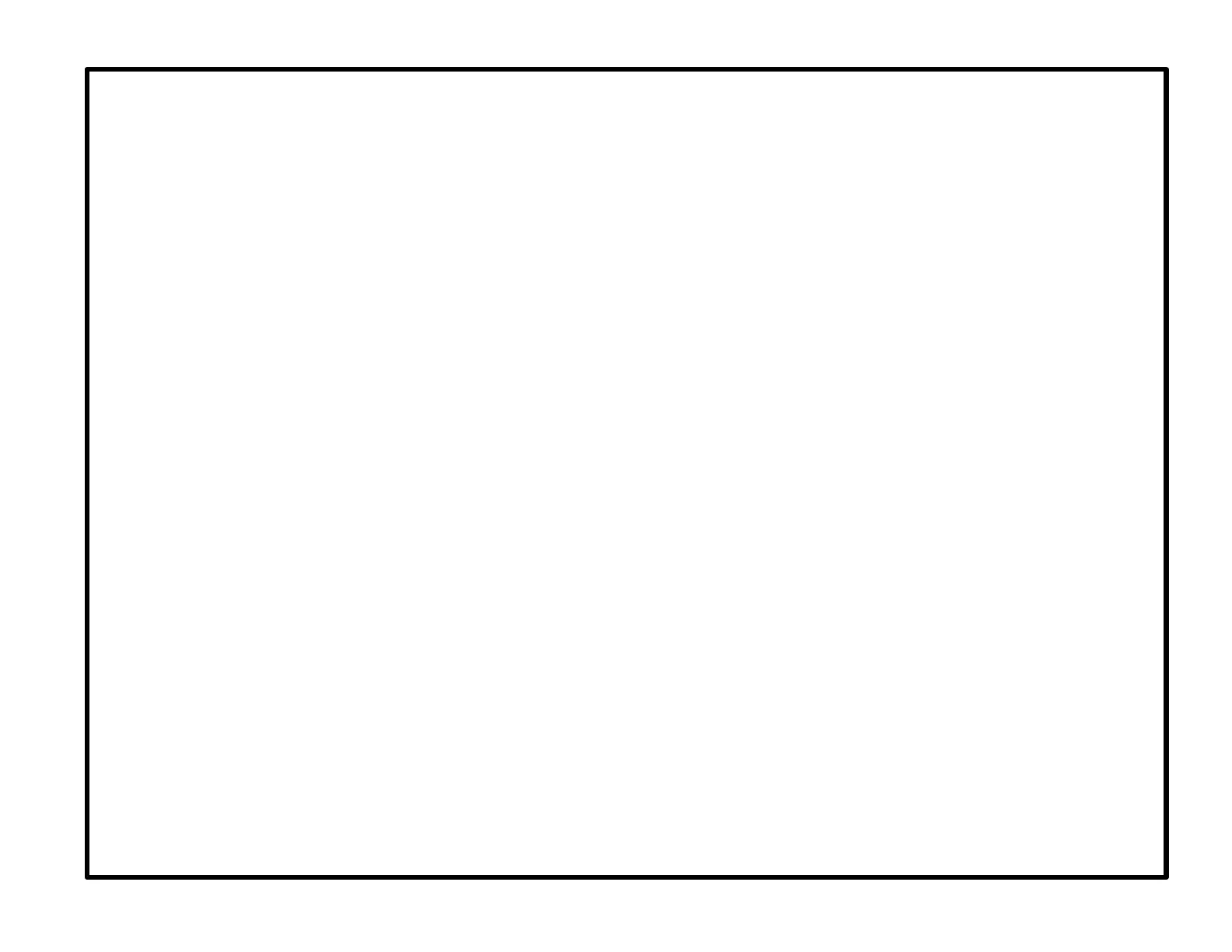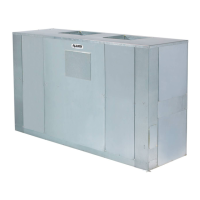Page 81
C19 DIAGRAM WITH B34 DIAGRAM AND D5 DIAGRAM
Limited Commercial Application
Basic Electromechanical or Electronic Thermostat
Connected to Residential Horizontal-Only Unit (GCS16H)
with RDE16-41 and Modulating Economizer
3- C19 SECTION and B34 SECTION with D5 Section (commercial application of elec
tromechanical or electronic thermostat wired to residential unit with modulating
economizer)
GCS16H units, even though not equipped for commercial use, may be converted to commer
cial down-flow use in a special limited application. The application requires use of RDE16 roof
duct enclosure to convert the unit to downflow use. The RDE16-41 includes a factory installed
harness for connecting optional REMD16M-41 or REMD16-41 economizer.
NOTE - The RDE16 economizer harness is represented in diagram C19. The economizer
harness and jack J3 are located inside the RDE16, not inside the unit as in other GCS16 com
mercial units. REMEMBER, this is a limited application converting a residential unit to com
mercial use.
The harness (shown in diagram C19) has pigtails on the unit end and harness jack J3 on the
economizer end. The unit end of the harness hard wires to the unit and thermostat with pigtails.
Economizer jack J3 at the economizer end of the harness connects directly into economizer
plug P4. Field wiring is shown in more detail in figure 59.
This particular application connects the REMD16M modulating economizer to the GCS16H.
The RDE16 return air side panel is removed and the REMD16M slides into the side of the cabi
net (exactly as it would into the side of a commercial GCS16). Economizer harness jack is
located in the return air compartment of the RDE16. This installation is shown in figures 92 and
57.
Operation Sequence:
1- Line voltage energizes transformer T1. Transformer T1 provides 24VAC power to all unit con
trols and thermostat.
2- Heating demand initiates at W1 in the thermostat and energizes relay K13. Heating demand
also passes through high temperature limits S10 to combustion air prove switch S18.
3- Relay K13 terminals 4-7 close to energize combustion air blower B6. Terminals 6-9 close to
energize the economizer (commercial units only). When the combustion air blower nears full
speed, prove switch S18 closes. Heating demand continues through S18 and through high
temperature limit S47 to energize ignition control terminal 1.
4- Ignition control A3 then waits 30 to 40 seconds to allow combustion air blower B6 time to draw
exhaust gas from combustion chamber and to introduce fresh air. Combustion air blower B6
operates throughout the heating cycle.
5- After the ignition control delay, A3 activates gas valve GV1, time delay K25 and the spark elec
trode. When flame is sensed by the flame sensor (minimum 5 microamps) the spark electrode
stops. If flame is not sensed after the first trial for ignition, controller A3 repeats steps 4 through
5 up to two more times (depending on controller make) before locking out. Delay relay K25
delays 60 seconds before closing.
If the control locks out, it can be reset by breaking and remaking thermostat demand.
6- After the 60 second delay, relay K25 closes to energize the indoor blower on heating speed.
Cooling:
I. Enthalpy Control in Low Position (outside air can be used for cooling).
First stage cool (all models):
7- Initial cooling demand Y1 is sent to enthalpy control A6 terminal 1.
8- Enthalpy control A6 has determined that outside air can be used for cooling and has switched
relay 1K and 2K internally.
9- Cooling demand is routed through enthalpy control to energize internal relay 1S. Internal con
tacts 1S1 close to complete a circuit through damper motor terminals T and T1.
10- When a voltage is applied across terminals T and T1 of damper motor, the damper motor ener
gizes and outdoor dampers open. Supply air sensor R1 varies the voltage across T and T1
and the outdoor air dampers adjust accordingly. First stage cooling is provided by outdoor air.
11-Thermostat terminal G energizes relay K3. K3-1 closes to energize the indoor blower and K3-2
closes to energize the damper motor.
2nd stage cool (all models):
12- Economizer outdoor air dampers remain open.
13- Additional cooling demand is routed from thermostat Y2 through enthalpy control terminals 3
and 5 to energize K1. The compressor provides all additional cooling.
14- K1 is a single pole contactor, allowing compressor terminal R and one leg of the condenser fan
to be powered at all times. K1-1 closes to energize compressor terminal C, condenser fan
motor and the run capacitors for each motor. Condenser fan and compressor immediately be
gin operating.
II. Enthalpy Control in High Position (outside air cannot be used for cooling).
15- Enthalpy control internal relays 1K and 2K switch. Internal relay 1S is de-energized and 1S1
opens. Outdoor air dampers close to minimum position.
16- Cooling demand is sent from thermostat terminal Y1 through enthalpy control terminals 1 and
2 and through enthalpy control terminal 5 to energize the compressor. The compressor han
dles all cooling.
17- K1 is a single pole contactor, allowing compressor terminal R and one leg of the condenser fan
to be powered at all times. K1-1 closes to energize compressor terminal C, condenser fan
motor and the run capacitors for each motor. Condenser fan and compressor immediately be
gin operating.
18- Thermostat terminal G energizes relay K3. K3-1 closes to energize the indoor blower and
K3-2 closes to energize the damper motor.
Night Setback (optional field installed-not shown)
19- Optional field installed time-clock (not shown), night thermostat S12 (not shown) and Night
Relay Kit K11 must be connected for night setback operation (night setback relay K11 not fac
tory equipped in modulating economizer). See figure 59.
20- Blower B3 operates only during a heating demand when night thermostat is closed.
21- When clock contacts close (not shown), relay K11 energizes. Contacts K11-1 open to disable
the day thermostat and contacts K11-2 open to drive the dampers full closed.
22- (Not Shown) Night thermostat S12 is typically set with setpoints below thermostat S1. During
unoccupied periods, K11-1 opens while S1 is disabled. When S12 closes, power is supplied to
S1 and the unit operates normally. When S12's setpoint is reached, S12 opens, S1 is disabled
and unit operation stops.
23- Shortly before the building is to be occupied, clock contacts open to de-energize relay K11.
Contacts K11-1 close to restore power the thermostat S1 and contacts K11-2 close to restore
power to the minimum positioner. Outdoor air dampers open to minimum position during blow
er operation.

